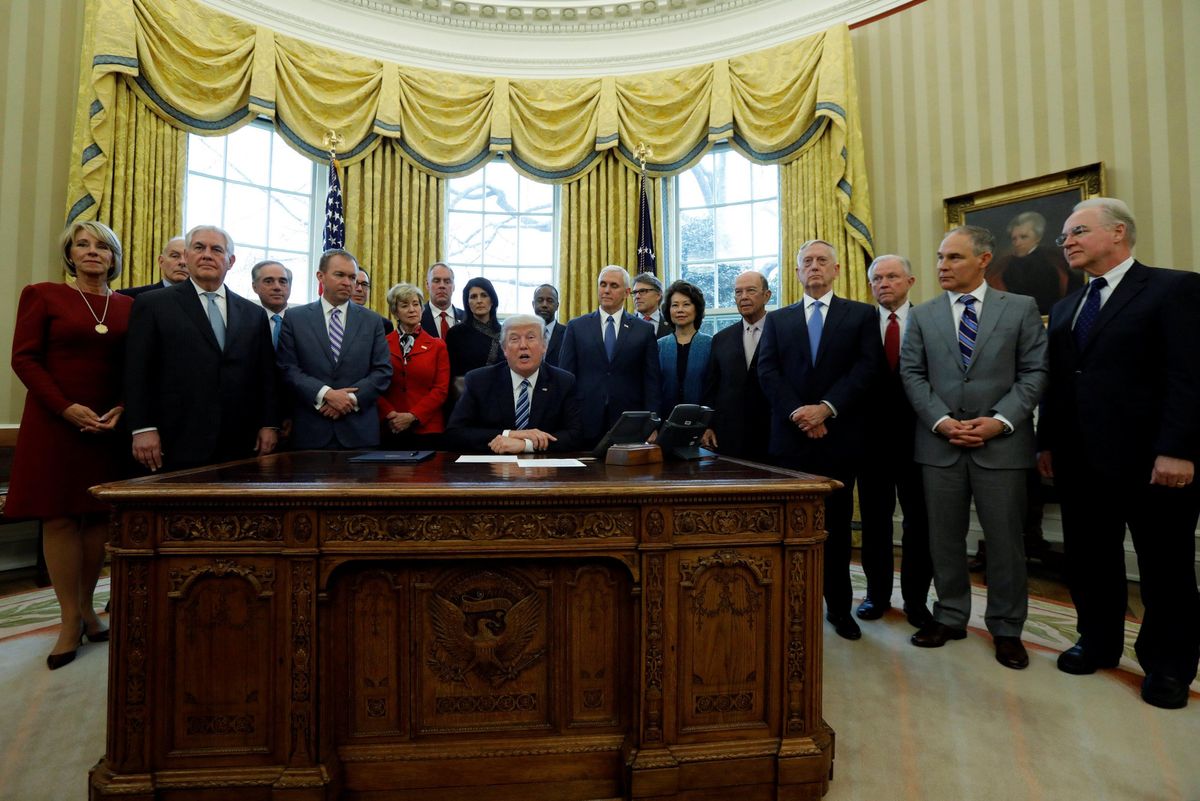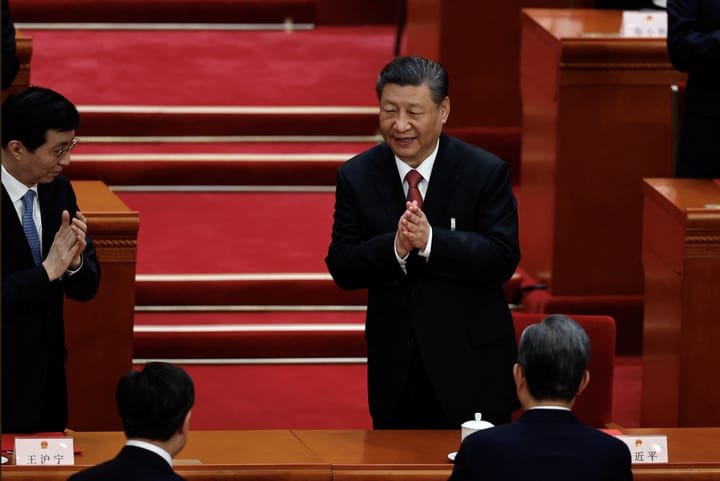What is the presidential cabinet?

A few minutes every morning is all you need.
Stay up to date on the world's Headlines and Human Stories. It's fun, it's factual, it's fluff-free.
While the word “cabinet” is never used in the document, Article II, Section 2 of the United States Constitution establishes the concept of presidential advisers from each government department
In less than a month, President-elect Joe Biden will take the oath of office and set about leading the country through an economic and health crisis. Doing so will be a tall order, but he will not take it on alone. In addition to Vice President-elect Kamala Harris, Biden is in the process of assembling his presidential cabinet, made up of the heads of executive departments and other agencies.
Some members of the presidential cabinet gain far more attention than others, based on the department they lead and their actions in the position. For instance, Attorney General William Barr, as the head of the Department of Justice (DOJ), has been one of the most visible members of the Trump administration. Secretary of the Interior David Bernhardt, far less so.
The makeup of Biden’s presidential cabinet is being closely watched as it will give an indication of his administration’s policy goals and the political philosophy that will shape those goals. Most of the cabinet positions require approval by the Senate, so it will be weeks, even months before we know the full incoming cabinet. Until then, here is what you need to know about the presidential cabinet.
The US president’s cabinet
While the word “cabinet” is never used in the document, Article II, Section 2 of the United States Constitution establishes the concept of presidential advisers from each government department:
“The President … may require the Opinion, in writing, of the principal Officer in each of the executive Departments, upon any Subject relating to the Duties of their respective Offices.”
The text further establishes that the president nominates people for these positions, but those nominations are confirmed “by and with the Advice and Consent of the Senate.” (This is the same section that establishes the confirmation process for Supreme Court Justices.)
In the nation’s first century and a half, the Senate’s confirmation process for presidential nominees was relatively streamlined. However, beginning in the mid-20th century, presidential nominations have regularly been required to testify before the Senate. Additionally, it is now more common for nominees to be rejected by select committees prior to being put up for a vote before the full Senate.
Historical cabinets
In addition to Vice President John Adams, President George Washington nominated four people to his first cabinet: Secretary of State Thomas Jefferson, Secretary of the Treasury Alexander Hamilton, Secretary of War Henry Knox and Attorney General Edmund Randolph. All four were confirmed by the Senate without controversy.
Washington’s successor, Adams, expanded the cabinet to include the Secretary of the Navy (like, the Secretary of War, this position has since been replaced in the cabinet by the Secretary of Defense). Over the course of the 19th and 20th century when more governmental departments were created, cabinet positions expanded.
So far, all three presidents from the 21st century – George W. Bush, Barack Obama and Donald Trump – have had 15 cabinet positions filled to head the following departments: Agriculture, Commerce, Defense, Education, Energy, Health and Human Services, Homeland Security, Housing and Urban Development, the Interior, Justice, Labor, State, Transportation, the Treasury, and Veterans Affair.
The most recent department to be added is the Department of Homeland Security, which was created under President George W. Bush following the September 11th terrorist attacks in 2001. The first Secretary of Homeland Security was former Pennsylvania Governor Tom Ridge.
Besides the department heads, presidential cabinets include the vice president, the White House Chief of Staff and the US Trade Representative. Heads of various governmental agencies are also often included in the cabinet, including the Environmental Protection Agency (EPA), the Office of Management and Budget (OMB) and the Small Business Administration.
President Trump’s cabinet
In addition to the 15 department heads, Vice President Mike Pence and White House Chief of Staff Mark Meadows, Trump’s cabinet includes the Director of the Central Intelligence Agency (CIA), Gina Haspel, EPA administrator Andrew Wheeler, OMB Director Russ Vought, Director of National Intelligence John Ratcliffe, Administrator of the Small Business Administration Jovita Carranza, and US Trade Representative Robert Lighthizer.
Two of the department heads are serving in an “acting” capacity, meaning they are temporarily serving in the position but have not been confirmed by the Senate. An acting cabinet member can only service in the position for 210 days from the day the position was left vacant.
Trump’s two acting cabinet members are Acting Secretary of Defense Christopher C. Miller and Acting Secretary of Homeland Security Chad Wolf. Trump announced he was replacing his last Secretary of Defense, Mark Esper, via a tweet on November 9. Miller can serve out the rest of Trump’s term without requiring Senate confirmation.
Wolf has served as an acting cabinet member since November 2019, however the Government Accountability Office has stated he was improperly elevated to the position and is not legally serving in the role. Nonetheless, in August, Trump tweeted he was officially nominating Wolf to the role. It is unknown if the Senate will confirm Wolf before the end of Trump’s term in office.
Have a tip or story? Get in touch with our reporters at tips@themilsource.com




Comments ()